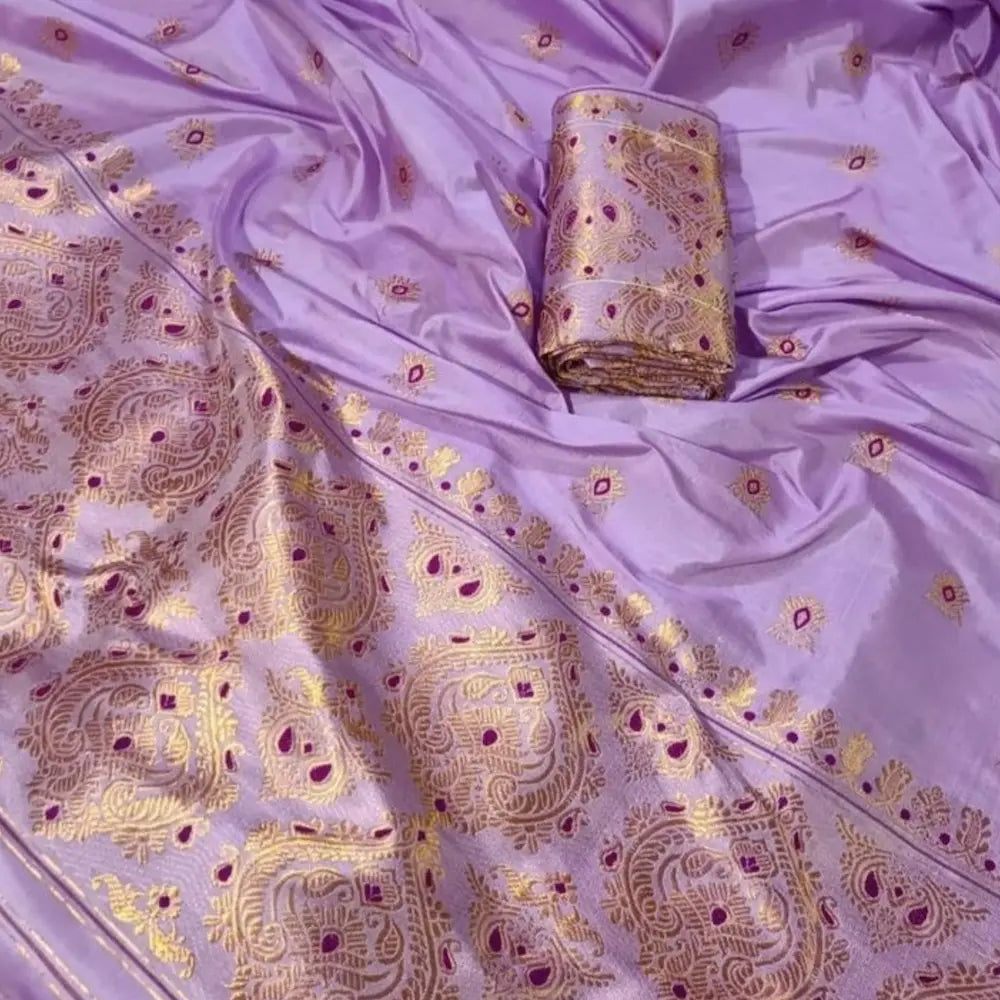
Mekhela Sador: The Woven Legacy of Assam

A Heritage Woven in Assam’s Silk Tradition
Mekhela Sador, the traditional Assamese attire, is a masterpiece of Northeast India’s textile heritage. More than just a saree, it is a two-piece ensemble consisting of the Mekhela, a pleated wrap-around skirt, and the Sador, a gracefully draped upper garment. Originating centuries ago, this textile tradition has flourished under royal patronage and remains a symbol of Assam’s rich culture and craftsmanship.
Woven primarily from Assam’s indigenous silks—Muga, Eri, and Pat—each Mekhela Sador is a testament to the region’s deep-rooted connection to nature. Muga silk, exclusive to Assam, is renowned for its natural golden sheen that only grows richer with age, while Eri silk is prized for its warmth and sustainability. Pat silk, known for its soft and lustrous texture, adds a luxurious drape to the ensemble.

The Artistry: Motifs, Weaving, and Symbolism
Mekhela Sador designs are heavily influenced by Assam’s lush landscapes, wildlife, and folklore. Each motif is handwoven with precision, carrying cultural and spiritual significance:
- Kolka (Paisley Motif) – Symbolizing fertility and growth, deeply rooted in Assamese traditions.
- Gosa Buta (Tree Motifs) – Representing prosperity and connection to nature.
- Jaapi (Assamese Headgear Motif) – A tribute to Assam’s agrarian heritage and resilience.
- Rhino and Elephant Patterns – Inspired by Assam’s famed Kaziranga National Park, reflecting wildlife conservation values.
- Geometric & Floral Borders – Intricately woven along the edges, enhancing the ensemble’s elegance.
Mekhela Sador is woven using the Tana-Bana (warp and weft) technique, ensuring each motif is seamlessly integrated into the fabric. Unlike printed designs, the patterns are woven directly onto the silk, adding depth and longevity to the artistry.

How to Identify a True Mekhela Sador
An authentic Mekhela Sador can be identified by:
- Handwoven Silk: Genuine Muga and Pat silk have a natural luster and soft texture, while Eri silk feels warm and sturdy.
- Intricate Woven Motifs: Unlike machine-made sarees, true Mekhela Sador patterns are seamlessly woven, not printed.
- Durability & Shine: Muga silk’s natural golden sheen only deepens over time, unlike synthetic alternatives.
Textural Variations: Handloom Mekhela Sador carries slight imperfections, a mark of genuine craftsmanship.

The Beauty of Handloom: A Testament to Artistry
Handwoven sarees are more than fabric; they are an expression of human skill and dedication. Unlike powerloom textiles, which focus on speed and mass production, handloom sarees retain an organic touch—each weave carrying slight variations, a signature of authenticity. The drape, softness, and breathable nature of handwoven fabric make them superior to machine-made alternatives, ensuring comfort and elegance that only improves with time.

Meet the Artist: The Weaver Who Weaves Stories
In the serene village of Sualkuchi, often called the ‘Silk Capital of Assam,’ 38-year-old Ranjit Sharma weaves stories into his Mekhela Sador creations. Warm, humble, and always eager to showcase his craft, Ranjit learned the art from his grandmother, who would sing folk songs while weaving under the moonlit sky. For him, every motif carries a tale—of Assam’s golden fields, the flowing Brahmaputra, and the rich heritage of his people. His passion for weaving is not just about preserving tradition but sharing a piece of Assam with the world, one exquisite Mekhela Sador at a time.
